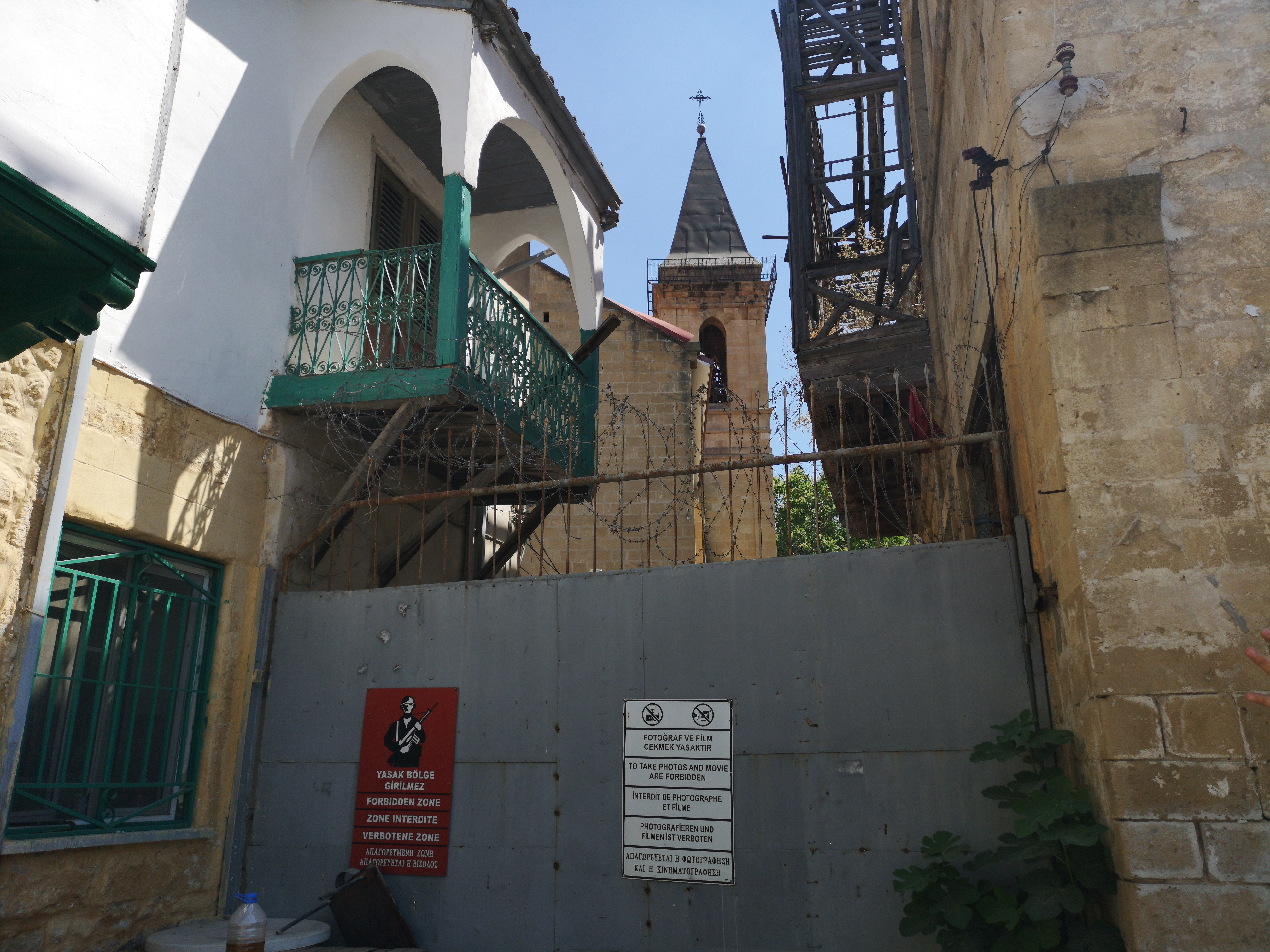
One island – One recognized country. One de facto state. Two sovereign base areas.
Cyprus, officially the Republic of Cyprus, is an island country in the Mediterranean. Cyprus has been divided since 1974. (Let’s skip over the details since the information varies between sides.) Northern Cyprus, officially the Turkish Republic of Northern Cyprus, is a de facto state that comprises the northern part of the island. It is only recognized by Turkey. To the rest of the world, Northern Cyprus is a part of the Republic of Cyprus. United Nations troops patrol the buffer zone or “Green Line” dividing the two parts. The Green Line actually goes through Nicosia—the world’s last divided capital. Although, I guess you can argue otherwise with Jerusalem.
So, you have the Greek Cypriots in the south and the Cypriot Turks in the north. But, wait. The Brits are in the mix too. At one point in time, Cyprus was a British colony. Although Cyprus gained independence, the Brits retained sovereignty over two military bases—Akrotiri and Dhekelia. Then, you have Russian investors. So many Russians everywhere. And, hordes of tourists from all over. Did I lose you? The island’s history is so complex, that I cannot even begin to summarize it in a few paragraphs. All I can tell you is, do not fly into Ercan International Airport and leave from Larnaca International Airport. In practice, it is done. On paper, it should not be. There are international airports on both sides of the island. However, you can only fly into Northern Cyprus from Turkey. Since Northern Cyprus is internationally unrecognized, the Republic of Cyprus views this as entering the country illegally. Without an official entry stamp, you may have problems leaving the country from the south. Airlines note this in a disclaimer.
Getting to Larnaca from Chicago in May is very expensive. Although Cyprus is an island for all seasons, airfare in the late spring and summer months is almost double of what it is during other times of the year. The last three months have been overwhelmingly busy. So much so, travel planning took a big hit. Instead of planning trips months out, I found myself booking flights and making hotel reservations just days before departure without any type of planning beforehand—very unlike me. Cyprus was no exception. I literally booked flights and made hotel reservations the week of the trip, and conducted research during the layovers en route to the country. Given the lack of planning and last minute reservations, I basically could not afford to fly anywhere that weekend.
I ended up using miles to get to and from Beirut, and booked cheaper flights from there to Larnaca. Although this strategy saved me a lot of money, it took up a lot of time—my route to Larnaca included five flights: Minneapolis-Chicago; Chicago-Amman; Amman-Beirut; Beirut-Athens; and Athens-Larnaca. But, this worked since I was traveling to Cyprus with someone from Lebanon. After almost two days of traveling, we finally arrived at Larnaca International Airport on the morning of Saturday, May 25, 2019.
Day 1
I booked a two-night stay at the Nissi Beach Resort, centrally located in Ayia Napa.

Getting around the island without a car was not that easy or affordable. Rideshare services, like Uber, are not available. A taxi from the airport to Ayia Napa costs €50 EUR (almost $60 USD). Mind you, it is just a 30-minute drive. There are shuttle buses available for a lot less, but they operate on a fixed schedule.
We only had three full days on the island, so we had to be selective with what activities made it onto our itinerary. After dropping off our backpacks at the hotel, we headed out to explore the area.
First stop: Cape Greco—one of the most photographed spots on the island.

The National Forest Park is home to a stunning coastline and a number of sea caves.

We spent some time on the trails before heading back to Nissi Beach.


After lunch, we decided to spend the rest of the day relaxing on the beach and swimming in the pool.

Day 2
Although Cyprus is relatively small in size, the places that we wanted to visit were spread out across the island. After wasting so much time waiting around for public buses the previous day, we decided to rent a car and drive ourselves. Since this was actually my first time renting a car abroad and driving on the left-hand side of the road, I was quite terrified. But, somehow, I managed to drive from one end of the island to the other.

Our route along the southern coast from Ayia Napa to Paphos included the following stops:
Larnaca – Port city on the south coast of Cyprus.



Limassol – City on the southern coast of the island known for the centuries-old Limassol Castle.



Petra tou Romiou – Also known as Aphrodite’s Rock. Legendary rock regarded as the birthplace of the goddess Aphrodite.



Paphos – City on the southwest coast of the island that has been inhabited since Neolithic times.


Day 3
Days before leaving for this trip, I arranged a customized day tour with Houssem through ToursByLocals. I had a very specific itinerary in mind, but not much time since we were flying back to Beirut later that evening, and Chicago via Frankfurt the following day. Fortunately, Houssem was willing to make it happen.
Buffer zones. Checkpoints. Abandoned quarters. And, a divided capital city. The day tour sure took us to some very interesting places—

Famagusta – City on the east coast of the island known for its preserved 15th- and 16th-centry Venetian walls, which are surrounded by a now waterless moat.





Varosha – Abandoned southern quarter of the Cypriot city of Famagusta. [You should definitely Google this place.]



Kyrenia – City on the north coast of the island known for its cobblestoned old town and picturesque harbor.





Nicosia – Largest city, capital, and seat of government of the island of Cyprus.














